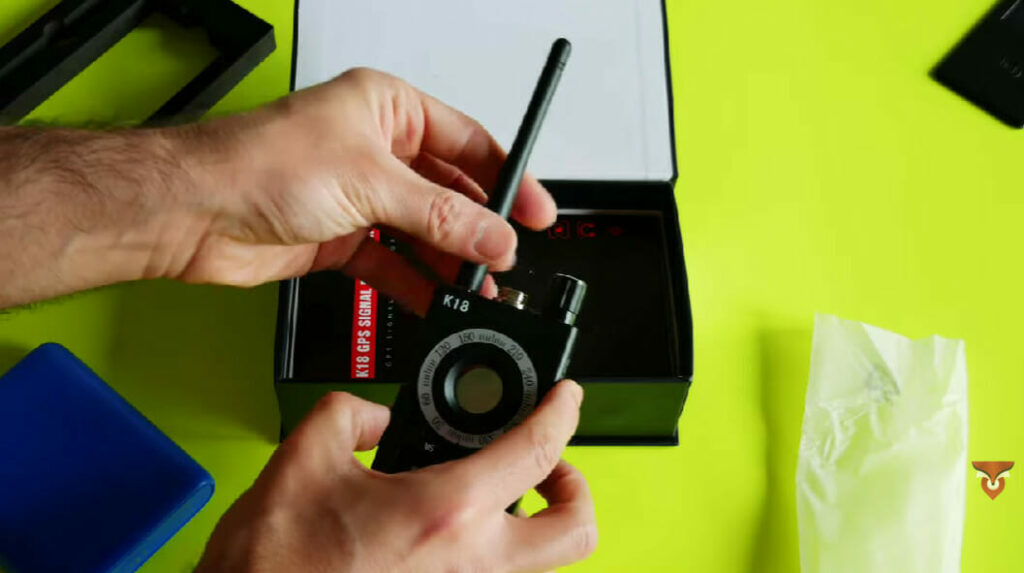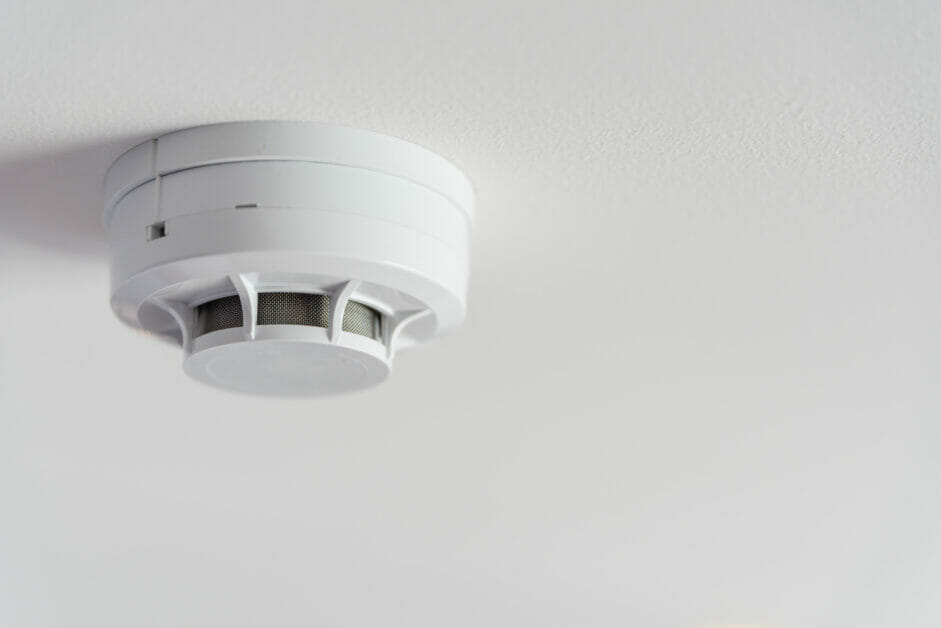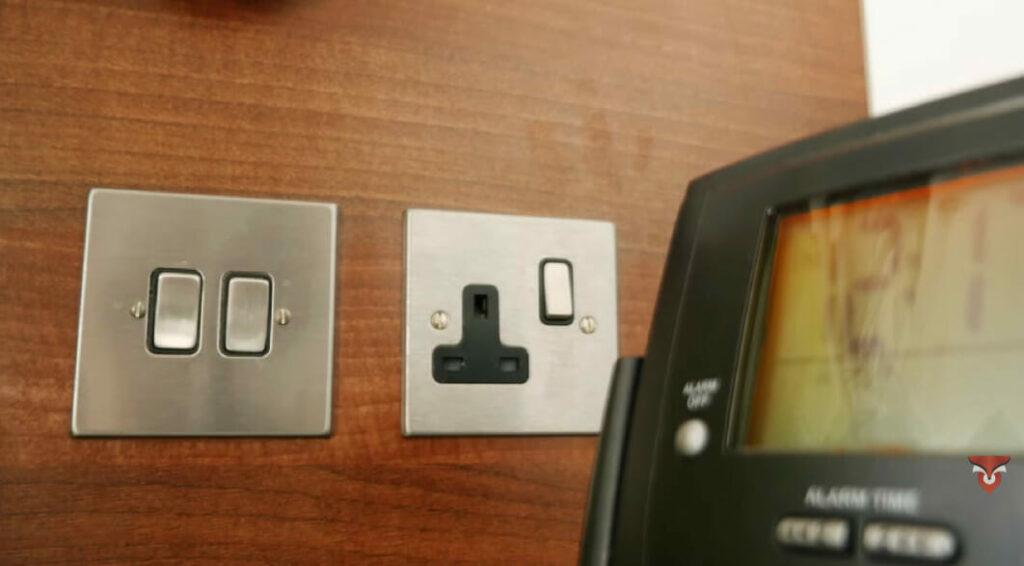I’ve recently become curious about bug detectors’ inner workings, and I bet you’re wondering how they work too! These handy gadgets detect hidden cameras, microphones, and GPS trackers, helping us safeguard our privacy in an increasingly surveilled world.
As I started learning about these powerful devices, I discovered that using a bug detector is quite simple.
Stay tuned as we delve deeper into how to use a bug detector effectively and learn strategies to bolster your security measures and protect your privacy.
Setting Up Your Bug Detector

Power Supply and Batteries
Pay attention to the power supply and batteries when setting up your bug detector. Ensuring the device has proper power cables and is charged before usage is crucial.
Most bug detectors have a built-in rechargeable battery, whereas others may require separate batteries like AA or AAA.
Adjusting Sensitivity

Next, focus on adjusting the sensitivity settings of your bug detector. This is an essential aspect of the device as it directly impacts its ability to detect hidden bugs or cameras.
The detector should have a feature that adjusts its sensitivity to various frequency ranges, which can be essential in avoiding false positives.
Step-by-Step Guide:
- Power off all devices in the room to create a baseline of wireless signals
- Turn on the bug detector and adjust the sensitivity settings according to the device’s instruction manual.
- Slowly increase the sensitivity and observe the lights or LED indicators on the detector.
- Once the detector picks up surrounding signals, fine-tune the sensitivity until the device can differentiate between genuine bugs and other electronic devices in the room.
And just like that, your bug detector’s sensitivity is perfectly adjusted to help me uncover potential snooping devices in your space!
Conducting a Thorough Sweep
Physical Inspection
If something raises an eyebrow, take a closer look. Scan the room for unfamiliar objects, especially hidden corners or high shelves.
Pay extra attention to smoke detectors, power outlets, and light fixtures.

Also, check furniture, decorations, or other items that might conceal a hidden camera or tape recorder.
Checking Electronic Devices
In this age of technology, hidden cameras and recording devices can be pretty sneaky.
Check all your electronic devices, including smartphones, laptops, and even smart TVs, in case a spy camera lurks.

Here’s a handy guide to help you inspect your electronic devices:
- Inspect your devices for signs of tampering or unusual changes.
- Use an RF bug detector to scan for radio frequency signals emitted by wireless cameras and listening devices.
- Run a security scan on your devices to rule out malware or unauthorized access.
Scanning Walls, Furniture, and Fixtures
Other areas to never overlook are walls, furniture, and fixtures. It’s surprising how many hiding places they hold for hidden cameras and microphones.

So, take time to examine every nook and cranny.
Let me walk you through the scanning process:
- Look for tiny holes in walls, furniture, and fixtures.
- Inspect common hiding places, like bookshelves, clocks, and picture frames, for anything suspicious.
- Use a flashlight to look for reflections, indicating a hidden camera lens.
- Go over the area with your bug detector to catch electronic signals or vibrations.
Common Places to Check for a Bug
| Area | Reason |
|---|---|
| Light fixtures | Often overlooked, easy place for bugs to be hidden. |
| Smoke detectors | Their locations on the ceiling or high on walls offer a good vantage point. |
| Electrical outlets | Can be easily modified to contain a bug and blend in seamlessly. |
| Phones and phone jacks | Calls can be intercepted, so these are common bug locations. |
| Clocks and alarm systems | The interior can be modified to accommodate a bug, and their ubiquity can help disguise them. |
| HVAC vents | Overlooked often and provide a broad view of rooms. |
| Mirror and Picture frames | Small cameras can be hidden behind or within the frames. |
| Furniture | Underneath, behind, or even within the structure of furniture. Especially near sofas, desks, and chairs where conversations occur. |
| Appliances | The complexity and size can often conceal a bug within or behind items like TVs, fridges, or microwaves. |
| Decorative items | They can easily hide small devices. |
| Bookshelves | Small devices can be placed among books or other items. |
Detecting Different Types of Bugs
Hidden Cameras
I gotta tell you, I’ve had my fair share of moments when I suspected that a hidden camera was watching me. It’s creepy, I know. But don’t worry; I discovered a foolproof way to sniff them out.
Look closely at your surroundings, and check for anything that seems off or out of place. It’s not just your gut feeling; most hidden cameras are cleverly disguised as everyday objects.

Use a bug detector to find those sneaky culprits. Those gadgets scan for frequencies between 10 MHz and 8 GHz. Get one of those bad boys and sweep every corner, nook, and cranny of the room – even storage spaces and lockers.
GPS Trackers
Alright, let’s move on to another intrusive bug – GPS trackers. These tiny devices can be attached to your car, belongings, or even your cellphone, and they’ll keep tabs on your movements like it’s no one’s business.
First things first, do a visual sweep of your car or belongings. If that doesn’t work, you’ll need a bug detector specifically designed for GPS trackers. It’s like having a superhero on your side in the battle against privacy invasion.
Preventing False Readings and False Positives
Common Causes of False Signals
One of the biggest challenges when using a bug detector is avoiding those pesky false readings and false positives. I’ve experienced this myself – they can be frustrating and lead you on a wild goose chase.
Some common culprits behind these false signals include routers, Wi-Fi devices (both transmitting and receiving), noise generators, and other radio frequency signals in the environment.
These devices tend to emit radio frequencies similar to actual bugs, causing the detector to pick up on them unintentionally.
Minimizing Interference
Fear not, though! You can minimize interference and reduce the likelihood of encountering false readings.
- First, turn off wireless networks and devices in the area when using a bug detector. This includes routers, Wi-Fi devices, and even some household appliances. Ridding the environment of these additional radio frequency signals can help make the bug detector’s readings much more reliable.
- Secondly, I’ve found it helpful to adjust the bug detector’s antenna length and sensitivity settings to better focus on the frequencies most relevant to potential hidden bugs, as mentioned in some scanning tips. By optimizing these settings, you can reduce the chances of receiving false positives from objects and devices that have different frequencies.
- Lastly, don’t forget to examine the area you’re scanning thoroughly. This allows you to identify any other possible sources of interference before starting the bug detection process.
Additionally, it’s always a good idea to familiarize yourself with common locations where bugs might be hidden, like in wall sockets, behind mirrors, or within electronic devices.
Additional Bug Detection Tips
Bug Sweeps
As I’ve noticed while using bug detectors, it’s essential to conduct regular “bug sweeps”. You should start by focusing on the frequency range first.
I found that most commercial bugs and devices operate between 10 MHz and 8 GHz, so make sure your detector covers this range.
During bug sweeps, I usually walk very slowly and thoroughly around the room, moving the detector over furniture, fixtures, fittings, and devices like baby monitors. Getting closer to a bug typically increases the signal strength from the detector.
If the bug detector leads me to a solid wall, I carefully search for any radio frequency emitting devices.
Staying Informed
One of the most critical aspects of bug detection that I’ve found paramount is staying informed about the latest technologies and advancements in bug detection.
Constantly educating yourself on the topic increases your chances of detecting and protecting yourself from unwanted listening, recording, or tracking.
In my experience, knowing the different types of spy gadgets, like hidden cameras, and understanding how they function can significantly help.
I also make it a point to stay current on the various types of bug detectors available on the market, as they often vary in their features and effectiveness.
References
Studies:
- ” A Modern Study of Microphone Bugs Operation and Detection”: https://www.civilsphereproject.org/research/a-modern-study-of-microphone-bugs-operation-and-detection
Books:
- “The Bug Detector Handbook” by Ralph D. Thomas
- “TSCM: Counter Surveillance and Electronic Countermeasures” by J.J. Kaufman
Video References
foXnoMad

